Sustainable data centers as a service
Yards and parks are important rest areas in the middle of busy urban life everywhere in Europe. Yards are also a key focus in YIT’s construction projects in Central Europe and Russia.
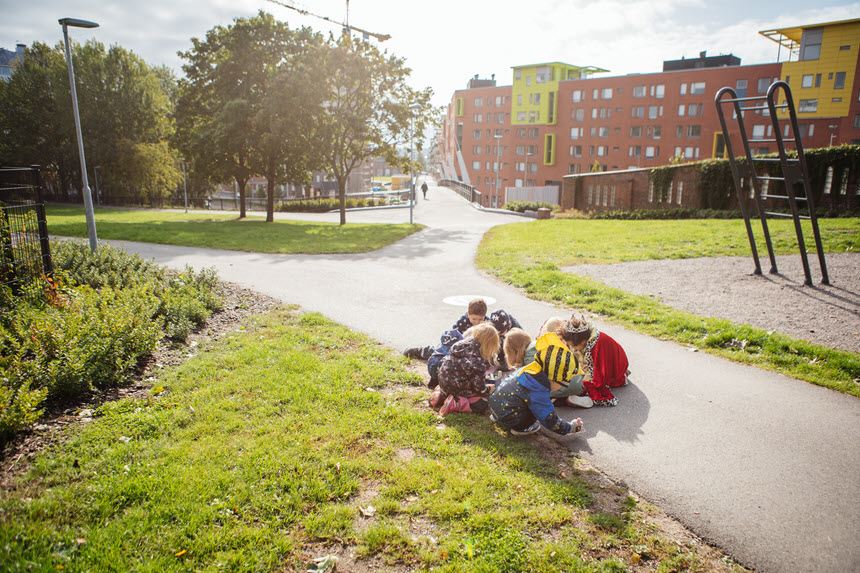
The Polish love to use their yards for relaxation. Yards must have peaceful places where you can enjoy spring or summer days with a good book and a cup of coffee. Flowers and plants bring nature to you. The Polish also really love barbecuing.
Andrzej Gorgoń, YIT Poland
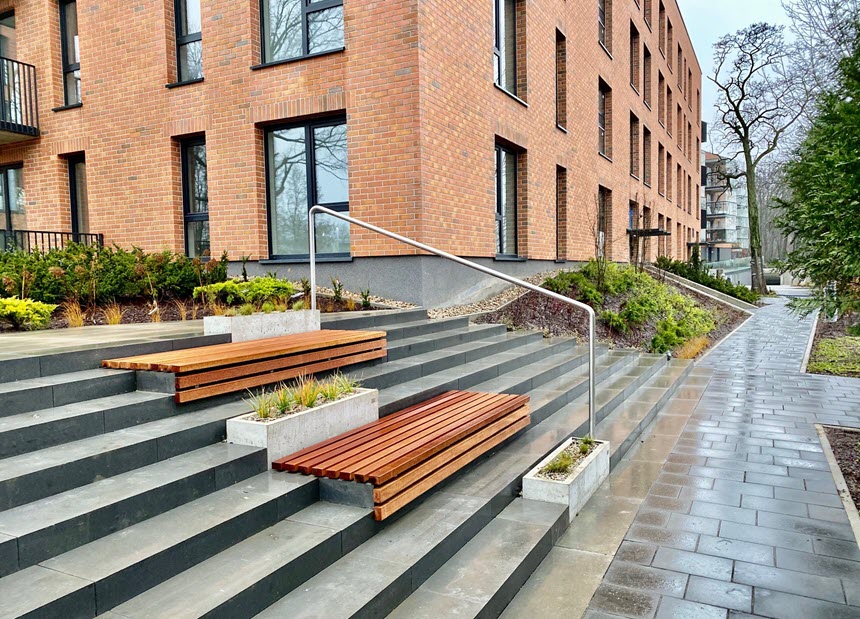
Gardening is one of the most popular hobbies in Estonia, and the popularity of urban farming is growing quickly. Last year, the City of Tallinn even founded an initiative that supports urban farming. Urban farming and gardens combine a beautiful environment with edible crops. Maintenance must be easy and convenient, whether you are doing it on a balcony, terrace or in a corner of the yard.
Kadi Aljas, YIT Estonia
Latvians do not have strong traditions or fixed ways of using yards — we value diversity. Children use yards for playing, and adults generally want fitness areas, such as fields or courts, as well as areas where they can spend time together on, for example, picnics.
Renate Vandere, YIT Latvia
Czech people are united in their need to spend time in the fresh air and nature, even in the middle of a city. Yards are extremely important. In the past 15 years, pools have become a phenomenon in Czech yards, and they are a popular place for social life in the summer. Czech people love pottering around and spend their time constructing things in their yards as well as on the ever-popular urban farming plots.
Veronika Vanišová, YIT Czech Republic
For Lithuanians, it’s important that their living environment offers something for the imagination, creativity and senses as well as an opportunity for encounters. Proximity to nature brings joy, which is why plantings, trees and gardens are important even in urban Lithuanian yards.
Akvilė Varanauskienė, YIT Lithuania
In 2018, YIT, local residents and other actors published a concept called More Life in Yards, which incorporates global megatrends such as communality and the need to own, customise and use urban spaces for the purposes of self-expression. The concept divides the yard area into three sections: active, quiet and social.
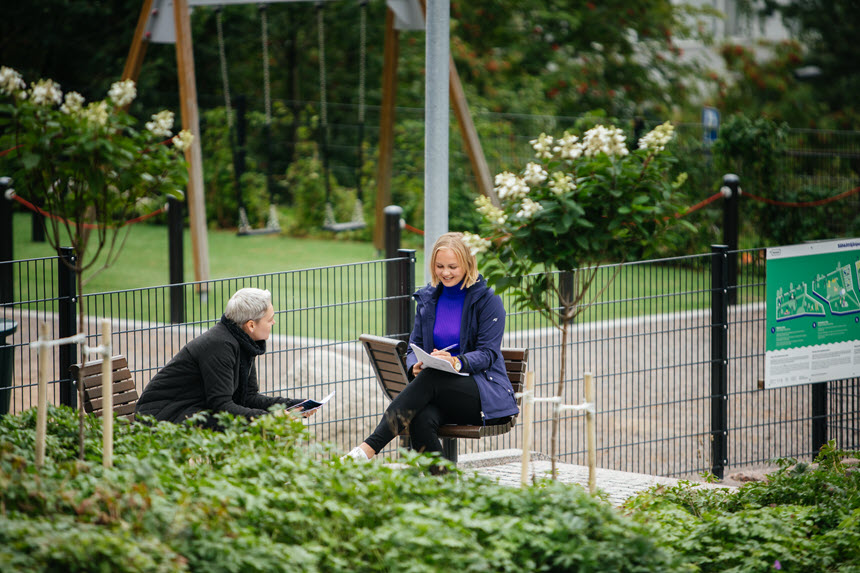
The first implementation to apply the concept was completed in Sähköttäjänpuisto Park in Pasila, Helsinki, in the summer 2018.
As cities become denser, people want their yards to be even more attractive — places where they can recharge from daily life and meet their neighbours. Therefore, YIT has invested particularly in yard and park design and implementation in residential construction in the past few years.
Small streams divide a larger yard area into smaller sections. Elsewhere, a housing company’s running path unites various yard areas into one. A green yard thrives on the unused roof of a car park, and a hundred-year-old broad-leaved tree is the centrepiece of a yard.
These are just a few examples of solutions that liven up yards that YIT has constructed around Europe. YIT is working on construction projects with yards in six different countries in Central Europe and Russia.
But what do yards look like in different parts of Europe?
You can have a small idea about this when you read the small interviews of YIT´s employees above. You can read the whole original article in our Newsroom.
In Russia, yards are the focal point of urban life
According to YIT’s customer survey, Russians consider a functioning yard as one of the key factors impacting their decision when they are buying an apartment. Russians love their yards and spend time there almost all year round.
“In Russia, yards are the focal point of social life. That’s where you meet your family, friends and neighbours to discuss both daily matters and social issues,” explains YIT’s Development Director in Moscow Juha Rissanen.
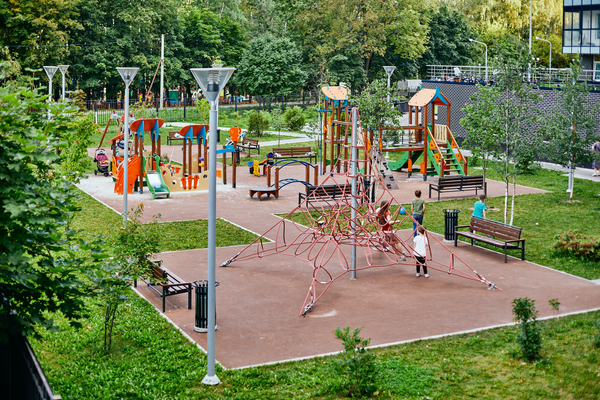
Whereas urban Finnish residents spend their time in parks, Russians gather in their yards. They spend time there, exercise, eat snacks and organise events. According to Rissanen, the improvement of urban yards has become a growing trend in bigger cities.
“For example, there’s a competition called Attractive Moscow, where they are looking for the city’s nicest yard or playground,” Rissanen describes.
Strict rules govern yard construction. They define the location and distance of green areas, flower beds, playgrounds and parking spaces, among other things. YIT has also adapted its yard concept to suit Russian regulations.
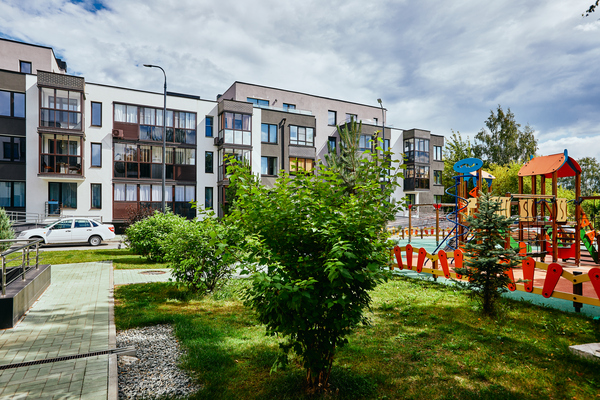
Central European yards combine urban hustle and bustle with peaceful homes
In addition to Russia, YIT has several construction projects with yards in Europe. In Central European cities, yards are seamlessly connected to urban life.
“The current trend is to open up the yards so they become a part of the city. We have planned the yards together with the residents and authorities so that they do not create closed or isolated blocks inside the city,” says Head of Housing Baltic countries and CEE Tom Sandvik from YIT.
According to YIT’s yard concept, yards are designed to have various public, semi-public and private areas. This combines the hustle and bustle of the city with peaceful areas for residents. In addition to ecological values and versatility, the yards should include various functions and areas, such as open spaces, services, exercise areas and playgrounds.
“Environmental friendly and natural values are visible in, for example, YIT’s construction project in Prague, where all rain water is processed in the yard structures and led naturally to a stream, which means that there is no need to lead any rain water to the sewerage,” Sandvik explains.
Connecting with nature and neighbours in your own backyard
A practical yard is a natural extension of a practical home – all year around



